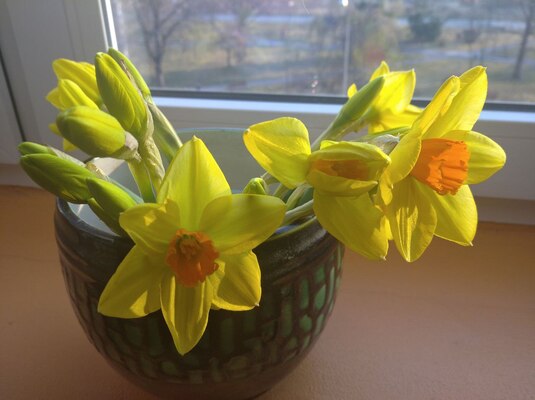
Congratulations FunkySocks&Dragons! It looks like we have just got the longest blog post title in the history of this blog…
It was inspired by a wonderful song from Dream English Kids, a great tool to teach and to practise the Present Continous and the rooms in the house. If you don’t know it yet, please look it up asap. It is also based on the talk I gave at the TeachyForum in March 2022.
All the ideas that you see below come from my classrooms and represent the tricks and the techniques that I have developed or I have been using with my more numerous pre-school groups. Perhaps it is worth mentioning that I have not really had a chance to work with very very big groups. The biggest number that I have had in the pre-school classroom on permanent basis was 12 and I know that there are colleagues out there who teach more.
As usual, these are the things that have worked for me and I hope that you find some of it useful, too.

#1 Building the routine
This is one of the key words in the the VYL world and today we are lucky to have the access to quite a few different ideas for different classroom routines, either from the coursebooks authors who make an effort to even prepare the classroom routine chants and songs or from the teachers who share their ideas on the social media or their blogs. Lots of sources of inspiration!
But the most important thing as regards the routine for the bigger groups is the time investment. Some of us might be lucky to get only the little angels in their groups, some of us might have to deal with the ‘regular’ children who sometimes behave, who sometimes want to discover the world and to experiemtn, sometimes are up to no good at all…These children (regardless of whether there are three or ten) will need the time to get used to the lesson format, to the teacher and to the rules we want to implement.
When I started or took over those big groups (a situation even more complicated probably, since you have to ‘re-start’ the group), I would go step by step, aiming at getting a perfect hello circle first, just the way I would want it. Then, once this one done, I would work on improving the revision stage. Then and only when I already was at two stages of the lesson under control, I would move to the following one, working at one stage at a time, until I was finally happy with the entire lesson.
Nothing happens overnight. Be patient! Be good to yourself, too, dear teacher!

#2 Adapting the routine
The routine is never for ever and for always. Children get used to the lesson procedures and activities and they might need be in need of something new. Children get bored with what they know and they might be in need of something new. Children grow and develop their social, cognitive, motor and linguistic skills and they might be in need fo something new.
These changes may involve the physical rearrangements of the room (and related to that changes in the routine) or changing the rhythm of the lesson by splitting up the music and movement stage and replacing it with songs used throughout the entire lesson, as punctuation marks or introducing a whole new stage to the lesson in order to be able to secure a short 1-1 chat with all the students in a large group. Which I described here in more detail.

#3 Rewards’ chart
Yes, I would like to recommend using a rewards’ chart, despite the fact that some educators are against the idea. I don’t use it with all my groups, sometimes it is not necessary at all, but with those of the groups and children that need that, for me a rewards’ chart is a temporary solution and a tool of establishing the routine and visualising the kids’ behaviour. As soon as the target audience ie the kids are familiar with the rules and the routines, the chart is slowly abolished.
And yes, I have already written about it in this post here.

#4 Lesson planning aka balance
Lesson planning for a group of pre-schoolers is not necessarily the easiest thing to do. There are quite a few factors that have to be introduced and that have to be introduced in the appropriate ration. Some of these include
- new material and revised material, vocabulary and structures
- familiar (aka ‘safe’) and unfamiliar (aka ‘intriguing’) elements in order to ensure that the students are engaged but not bored.
- skills, mostly listening and speaking but also reading and writing, when appropriate
- settlers and stirrers
- a variety of materials or, in other words, not only flashcards.
- a variety of interaction patterns, not only individual work and not only whole class because all the children waiting for their turn, especially in large group, will find themselves alternative activities if there are too many T-S activities. If, on the other hand, the lesson is based on the whole class activities, the teacher is at risk of losing the contact with the individual students in the group.
- games and ‘paper’ (aka hard work). Personally, I am of the opinion that one paper per lesson is just what is necessary. One page in the coursebook OR one handout OR one craft. No more. During the covid year when we were studying online, I gave up on paper completely. The children had their coursebooks but we used this material only for homework. The lesson time was devoted to interaction.

#5 Kids’ involvement
There are so many things that children can do in class and so many things that children will love to do in class because they want to be involved and they want to be a part of the classroom routine. This will help to make them more engaged and connected to the English bubble.
Kids can help with handing out and collecting materials and resources, choosing songs, games and songs, choosing the next student to take part, checking the register, cleaning the board, watering the plants etc etc. Even if in the beginning of the course, the kids are only separate individuals who don’t know anyone else and who perhaps do not feel like interacting with anyone else, this will be changing throughout the year. There is a lot that the teacher can do to help speed it up.
A community, be it a community made of three members or ten or twelve, will be much easier to manage than a group of individuals.

#6 Who’s the teacher?
To be honest, in my books, the main reason for inviting children to take part in taking control of the lesson is the fact that is maximising production. It is also one of the steps towards pair-work. However, there are other benefits, too. Children become more responsible for the lesson, they become more independent and they learn how to be in control. That, in itself, will have a positive impact on the classroom management and children’s behaviour. But there is more, too!
In a way, children become the teacher assistants, too, and that means that while they are leading the activity itself, the teacher can devote more (or all) of his or her attention to managing of the group and their behaviour.

#7 Pairwork
It is absolutely possible! Yes, yes, yes! I have done it and not once! I have also done it and kept and eye on how I was doing it in order to share it with my fellow teachers. You can read about it here in more detail. I will only say this: it did help me to deal with big groups and to create opportunities for all of my students to produce the language. With careful staging, with a mixed-ability goup and a mixed-age group it took thirteen lessons, from our first ‘Hello’ ever until the lesson when we played in pairs, in English.

#8 Staging
Staging is a topic that deserves its own post and I will eventually get down to typing it up. In the meantime, only a few words here.
Staging is important. Children being only 3 or 4 or 5 need the external help from the teacher in order to complete the tasks successfully. The first step is the successful choice of an activity.
The second step is how it is going to be done in class, what has to be done before the lesson, how the kids are sitting, what are the main mini-stages, what are going to be the teacher’s instructions and the way of modelling the teacher chooses and so on…It all matters and if it is not taken care of and planned carefull, the activity is likely to end up being a disaster, especially if it is a craft activity and especially if the group is big and the teacher cannot physically help with cutting, colouring, glueing and assembling…
Here you can find some of the tried and tested, teacher-friendly and VYL-friendly craft activities: don’t you just love a circle, a caterpillar and a butterfly, playdough activities.

#9 Songs
Songs are great and there are at least sixty reasons to use a song in the VYL classroom. Here it is important to highlight the huge potential they have as regards building a community, forming the everyday class routine and uniting the kids to balance the tasks they complete individually. And, as an easy stirrer. In that sense, these are especially imporatant and useufl with the bigger groups.

#10 Storytelling
In the same way as the songs are a stirrer easily included in the lesson, stories (storybooks, story boards, videos or stories told) are easy settlers. There are of course many more reasons to use these in class (I have found fifty so far) but, again, from the point of view of a teacher of a big pre-school groups, they also help build a community. They are also a great tool that can be effective with a group of one, three or twelve as all the children can participate in it simultaneously, if the activity is set up properly (some ideas of how it can be done can be found here).
Anything else? Please add your ideas in the comments!
Happy teaching!

Some other posts that you may found useful are here:
- When the world begins to fall apart post and teaching under the most unexpected circumstances
- About the impact of the classroom on the lesson, VYL-only classroom, adult EFL classroom adapted and teaching in kindergartens.
- Before you start working with preschoolers: a word of advice and the VYL starter kit
- About scaffolding
- The hidden perks of teaching VYL